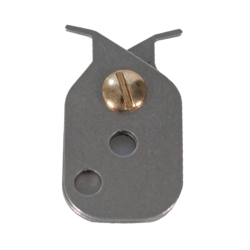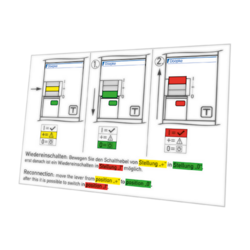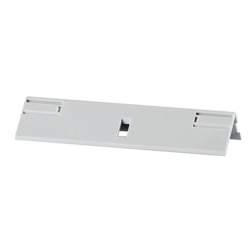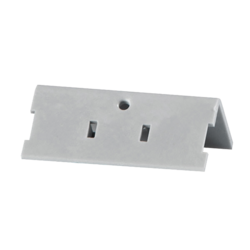residual current circuit-breaker DFS 4 063-4/0,03-A EV NA
- sensitive to pulsating and alternating currents, mains-voltage-independent
- for electromobilitywith emergency shut-off function
- minimal power dissipation at each pole
- large connection terminals up to 50 mm²
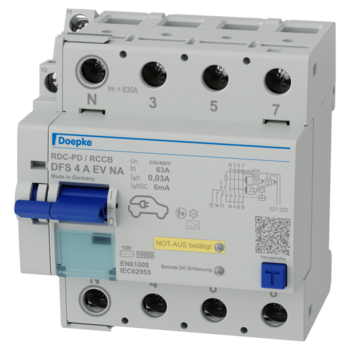

residual current circuit-breaker DFS 4 063-4/0,03-A EV NA
- sensitive to pulsating and alternating currents, mains-voltage-independent
- for electromobilitywith emergency shut-off function
- minimal power dissipation at each pole
- large connection terminals up to 50 mm²
Details
Residual current circuit-breakers, four-pole, 63 A, 0,03 A, Type A, for electromobility, with emergency shut-off function, N left
Residual current circuit-breakers (RCCB) switch the power supply off if dangerous high residual currents occur. DFS 4 are two-terminal or two-terminal pair residual current circuit-breakers for single- or three-phase networks. In the standard design, the compact devices are just four module widths wide. They are available with many different residual current types and variants for rated currents up to 125 A. The large two-tier terminals can also accommodate large conductor cross-sections. The trip position of the multi-function toggle switch simplifies fault-finding. The free label software helps in the labelling process. Type A switches are sensitive to pulsating and alternating currents. This function is independent of the mains voltage. Switches in the EV design are intended for use in charging equipment for electric vehicles. They have an additional function to detect smooth DC residual currents ≥ 6 mA. This retains the protective function of upstream residual current circuit-breakers of type A or F. Push-buttons for disconnection in emergency situations can be connected to residual current circuit breakers in the NA design (NA for emergency switching off). An integrated LED indicates the emergency tripping by a push-button or wire break. The residual current circuit breaker can be reactivated once the fault has been rectified. Several RCCBs can be connected in parallel.
tripping not dependent on mains and auxiliary voltage, sensitive to AC residual currents and pulsating DC residual currents (type A) , supplementary function, dependent on the mains voltage, for detecting smooth DC residual currents and emergency switching off function, tripping threshold of 6 mA for smooth DC residual currents, LED display for when the supplementary function is active, No additional wiring overhead, compact design for all rated currents, high short-circuit resistance, double-sided two-tier terminals for large conductor cross-section and busbar, switch position indicator, viewing window for labels, multifunction switch toggle with three positions: "on", "off" and "tripped", Neutral conductor position left
quick fastening to mounting rail, any installation position, supply from any direction
These RCCBs are only designed for use in charging stations for electric vehicles, Not permitted for protecting systems in which electronic equipment may cause residual currents with frequencies not equal to 50 Hz. AC/DC sensitive residual current circuit-breakers of type B or B+ must be used in this case.
- Operating instructions
- Data sheet
- Prospectus Power for building sites
- Technical information Derating graph for DFS 2/4
- Technical information dissipation power DFS 2/4
- Prospectus Complete RCCB brochure
- Prospectus EV design
- Prospectus Circuit-breaker overview
- Prospectus DFS 4 NA
- Prospectus DFS HD "heavy duty"
- Text for invitation to tender RTF
- Text for invitation to tender GAEB XML
- Text for invitation to tender GAEB 2000
- Text for invitation to tender GAEB 90
- Dimensional drawing Group view
- STEP file
- Wiring diagram
- Labelling software DFS / DLS
Residual current circuit-breakers, four-pole, 63 A, 0,03 A, Type A, for electromobility, with emergency shut-off function, N left
Residual current circuit-breakers (RCCB) switch the power supply off if dangerous high residual currents occur. DFS 4 are two-terminal or two-terminal pair residual current circuit-breakers for single- or three-phase networks. In the standard design, the compact devices are just four module widths wide. They are available with many different residual current types and variants for rated currents up to 125 A. The large two-tier terminals can also accommodate large conductor cross-sections. The trip position of the multi-function toggle switch simplifies fault-finding. The free label software helps in the labelling process. Type A switches are sensitive to pulsating and alternating currents. This function is independent of the mains voltage. Switches in the EV design are intended for use in charging equipment for electric vehicles. They have an additional function to detect smooth DC residual currents ≥ 6 mA. This retains the protective function of upstream residual current circuit-breakers of type A or F. Push-buttons for disconnection in emergency situations can be connected to residual current circuit breakers in the NA design (NA for emergency switching off). An integrated LED indicates the emergency tripping by a push-button or wire break. The residual current circuit breaker can be reactivated once the fault has been rectified. Several RCCBs can be connected in parallel.
tripping not dependent on mains and auxiliary voltage, sensitive to AC residual currents and pulsating DC residual currents (type A) , supplementary function, dependent on the mains voltage, for detecting smooth DC residual currents and emergency switching off function, tripping threshold of 6 mA for smooth DC residual currents, LED display for when the supplementary function is active, No additional wiring overhead, compact design for all rated currents, high short-circuit resistance, double-sided two-tier terminals for large conductor cross-section and busbar, switch position indicator, viewing window for labels, multifunction switch toggle with three positions: "on", "off" and "tripped", Neutral conductor position left
quick fastening to mounting rail, any installation position, supply from any direction
These RCCBs are only designed for use in charging stations for electric vehicles, Not permitted for protecting systems in which electronic equipment may cause residual currents with frequencies not equal to 50 Hz. AC/DC sensitive residual current circuit-breakers of type B or B+ must be used in this case.
- Operating instructions
- Data sheet
- Prospectus Power for building sites
- Technical information Derating graph for DFS 2/4
- Technical information dissipation power DFS 2/4
- Prospectus Complete RCCB brochure
- Prospectus EV design
- Prospectus Circuit-breaker overview
- Prospectus DFS 4 NA
- Prospectus DFS HD "heavy duty"
- Text for invitation to tender RTF
- Text for invitation to tender GAEB XML
- Text for invitation to tender GAEB 2000
- Text for invitation to tender GAEB 90
- Dimensional drawing Group view
- STEP file
- Wiring diagram
- Labelling software DFS / DLS

